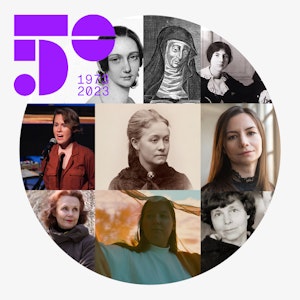It is with great pleasure that we invite you to be part of something extraordinary! On November 11th at 17, we will be hosting an event like no other in Levinsalen at the Norwegian Academy of Music. The concert is part of the NMH’s Chamber Music Week, which celebrates Great Female Musicians and Composers. At this concert, there will be three amazing performances of lesser-known compositions that we hope to see performed more often in the future!
Programme
- Agnieszka Stulgińska (1978–): ORI for clarinet, cello, accordion and electric guitar
- Madeleine Dring (1923–1977): Trio for oboe, bassoon and piano
- Louise Farrenc (1804–1875): Nonet, Op. 38
Participants
- Hin Fung Jim (flute)
- Eliška Slavíková (oboe)
- Björn Nyman (clarinet)
- Even Brodwall (horn)
- Jonathan Sandqvist (bassoon)
- Rakel Grønberg (violin)
- Are Sandbakken (viola)
- Sophie Kauer (cello)
- Marius Knudsen Flatby (double bass)
- Tamar Makharadze (piano)
Ensemble AREPO
- Madara Eleonora Mežale (clarinet)
- Elizabeth Kate (cello)
- Noel Rubli (accordion)
- Marco Slaviero (electric guitar)
About
Agnieszka Stulgińska (1978–): ORI
Music by Agnieszka Stulgińska is inspired by philosophical texts, folk tales, stories, and impressions. She often composes in response to concrete visual stimuli, using extended techniques and sonoristic effects in order to recreate the images via an aural landscape that conjures them back. Street sounds are another major source of inspiration for Stulgińska. She evokes them by using acoustic as well as electronic media. Her works include solo, chamber, choral, electronic, and orchestral pieces, usually combined with other types of art: movie, dance, and theatre.
ORI reflects the replication of the DNA, which highlights the emergence of multiple copies from a single original DNA molecule, thereby raising questions about concepts like identity and diversity.
Madeleine Dring (1923–1977): Trio for oboe, bassoon and piano
Madeleine Dring was a gifted British composer, lyricist, and actress known for her multifaceted talents. Her music spans various genres, from classical compositions to witty, humorous songs. Dring's work reflects her unique ability to blend sophistication with a playful touch, leaving a lasting impression on audiences worldwide. The trio is not as well-known as her flute, oboe, and piano trio and has been published 10 years after her death, leaving it unclear when exactly it was composed. Nevertheless, it carries the rich tapestry of her personality and deserves recognition.
Louise Farrenc (1804–1875): Nonet, op. 38
Louise Farrenc was a remarkable 19th-century French composer and pianist whose Nonet for winds and strings is a masterpiece of chamber music. Farrenc's Nonet is a captivating composition that showcases her exceptional talent for blending diverse instruments into a harmonious ensemble. This delightful piece combines winds and strings to create a rich and engaging musical experience, making it a must-listen for classical music enthusiasts.
